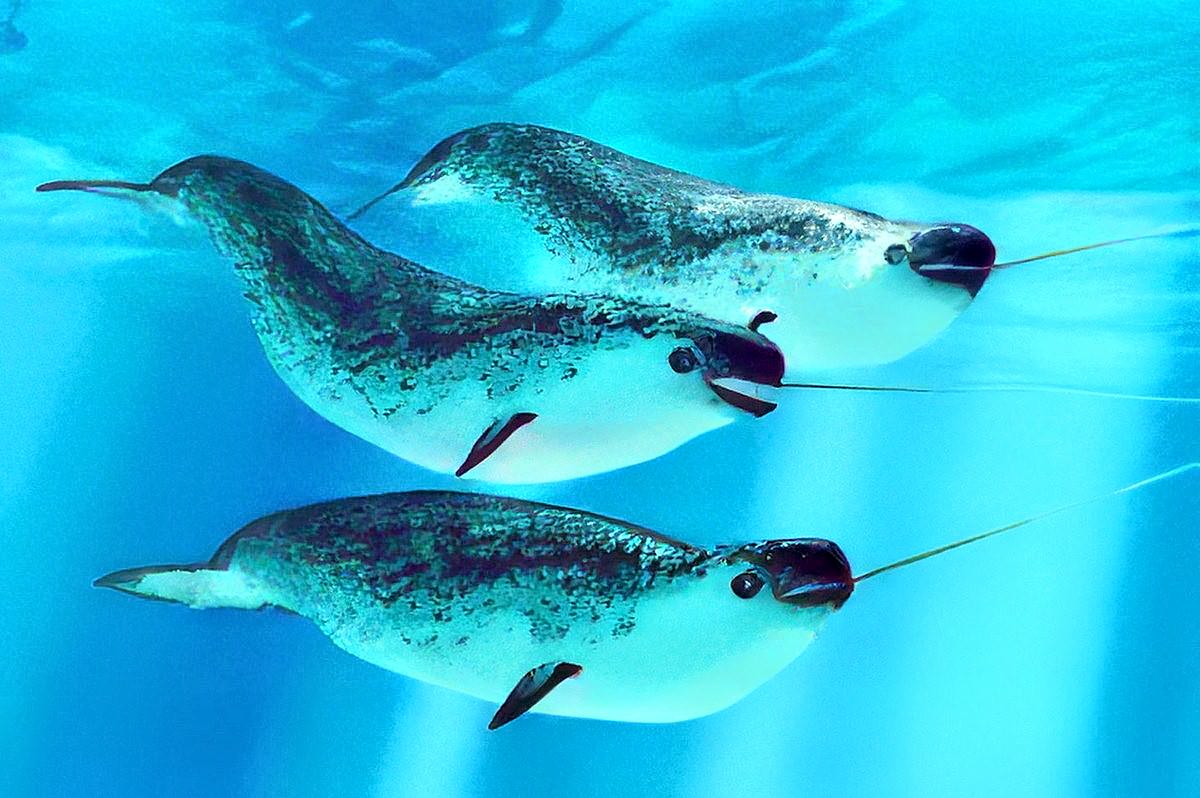The Legendary Unicorn and Its Fabled Horn 🦄
In the realms of myth and folklore, few creatures have captivated the imagination quite like the unicorn. 🌈 Its striking appearance, with a magnificent white horse-like form adorned by a spiraling horn upon its brow, has been etched into the minds of dreamers and storytellers across cultures. The unicorn’s mythical aura was further embellished by tales of its horn’s incredible powers – a mere touch could purify tainted waters, and its powdered form could cure any ailment, even raising the dead from their eternal slumber. 💫
While the unicorn may have origins rooted in ancient Indian civilizations, it found particular reverence in Western cultures, where it was imbued with symbolism of purity, grace, and the divine. In European folklore, the unicorn’s presence was often a harbinger of good fortune, with its very breath said to be imbued with the colors of the rainbow. 🌈 The creature’s horn, known as the “alicorn,” was believed to possess unparalleled healing powers, making it a coveted treasure among royalty and nobility alike.
Enter the Narwhal: Nature’s Own “Unicorn of the Sea” 🌊
Little did our ancestors know that a true marine marvel, the narwhal, would one day challenge the unicorn’s mystical allure. These Arctic denizens, cousins to the beloved beluga whale, possess a trait so extraordinary that it baffled scientists for centuries – a long, spiraling tusk protruding from the left side of their upper jaw. 🦷
At first glance, this tusk bore an uncanny resemblance to the fabled unicorn horn, leading to a lucrative trade in the Middle Ages, where Viking seafarers sold narwhal tusks as genuine unicorn horns, fetching prices ten times that of gold. 💰 Even the Danish royal throne, crafted in the 17th century, was believed to be adorned with narwhal tusks, lending an aura of sanctity to the coronation ceremonies.
The Tusk’s True Purpose: A Biological Enigma 🧪
As science advanced, the narwhal’s tusk was revealed to be a canine tooth rather than a horn, but its purpose remained shrouded in mystery. Theories abounded, from a weapon for combat to a tool for hunting fish and squid, yet none could fully explain the tusk’s peculiar form and function.
It wasn’t until 2014 that Harvard professor Martin Nweeia uncovered a groundbreaking revelation. 💡 He discovered that the tusk’s internal structure, riddled with microscopic tubules connected to the narwhal’s nerve endings, could sense changes in water salinity, temperature, and pressure. This suggested that the tusk served as an exquisite sensory organ, guiding the narwhals’ migration and survival in the unforgiving Arctic waters. 🌡️
Imagine a narwhal gracefully navigating the icy depths, its tusk acting as a highly specialized probe, detecting subtle shifts in the ocean’s chemistry and currents, leading the way to bountiful feeding grounds or safe migratory routes. This extraordinary adaptation highlights nature’s ingenious solutions to the challenges of survival in one of the harshest environments on Earth. 🌏
An Evolutionary Twist: The Tusk as a Sexual Ornament 🌹
Yet, the narwhal’s tusk still held another intriguing secret. As a predominantly male trait, with only 15% of females developing the iconic spiral, some scientists proposed that the tusk might function as a secondary sexual characteristic, akin to a peacock’s tail or a lion’s mane. 🦚
Drawing from Charles Darwin’s pioneering work on sexual selection, the narwhal’s tusk could be a product of evolutionary forces, where females favored mates with the most impressive tusks, leading to the trait’s perpetuation and exaggeration over generations. This preference may have stemmed from the tusk’s potential to signal a male’s overall fitness, strength, or genetic quality. 💪
Imagine a courtship ritual where male narwhals engage in elaborate displays, crossing their tusks in a gentle jousting dance, vying for the attention of potential mates. The victor, adorned with the longest, most intricate tusk, would then secure the right to pass on his genes to future generations, perpetuating the cycle of sexual selection. 💕
The Narwhal’s Struggle in a Changing Arctic 🌎❄️
Sadly, the narwhal’s incredible adaptations may not be enough to shield it from the rapid changes occurring in the Arctic region. As climate change continues to melt sea ice and disrupt the delicate ecosystems they call home, these remarkable creatures face an uncertain future.
Warmer waters could alter the distribution of their prey, forcing narwhals to migrate farther and expend more energy in search of food. Additionally, the loss of sea ice could increase their vulnerability to predators and human activities, such as shipping and resource extraction. 🛳️
Conservationists and researchers are working tirelessly to understand the narwhal’s unique biology and behavior, hoping to develop effective strategies to protect these precious marine mammals. By raising awareness of their plight and advocating for sustainable practices, we can ensure that the narwhal’s remarkable journey continues for generations to come. 🌳
Conclusion: Embracing Nature’s Wonders 🌍
The narwhal’s tusk stands as a testament to the intricate marvels of nature, challenging our preconceptions and reminding us that even the most bizarre biological adaptations often hold profound purposes. As we continue to unravel the mysteries of this enigmatic creature, we are reminded to approach the natural world with a sense of awe and curiosity, for within its depths lie wonders that defy our wildest imaginations. 🌈
By appreciating and protecting the narwhal and its Arctic habitat, we not only safeguard a remarkable piece of our planet’s biodiversity but also honor the intricate tapestry of life that has evolved over millions of years. In doing so, we ensure that future generations can marvel at nature’s ingenious solutions and continue to be inspired by the captivating tales of the “unicorn of the sea.” 🐳
Copyright © 2025 Hea1th.net

